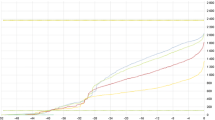Abstract
A notable difference in rooms (hotel) revenue management reservations versus table (restaurant) revenue management (TRM) reservations is the variation that occurs in duration. In the hotel setting, durations are explicit in the reservation itself: a stay of a specified number of nights. In restaurants, by contrast, there is a natural variation in the amount of time parties are at the table. This duration variation presents interesting challenges to TRM. Dealing with these challenges is our goal in the article. Specifically, we introduce and evaluate 10 different models for restaurant capacity and reservations, five each of two different types. In one type of model, tables are pooled and parties are not explicitly matched to tables; in the other parties are matched to specific tables. The objective is to maximize revenue (or contribution) from known reservation demand. Variables are both the mix of tables in the restaurant and the reservations accepted. An important ancillary goal we have is to evaluate the effectiveness of the models from the perspective of customers, specifically examining whether a table is ready for them at the time of the reservation, an issue of high importance to restaurant patrons. Of the 10 models, seven define a pareto frontier between revenue and service; of those seven, five are pooling models. We use this frontier to offer advice to restaurateurs looking to better manage reservations.


Similar content being viewed by others
References
Alexandrov, A. and Lariviere, M.A. (2012) Are reservations recommended? Manufacturing and Service Operations Management 14 (2): 218–230.
Anonymous (2015) 2015 Restaurant Industry Pocket Factbook. Washington DC: National Restaurant Association.
Bell, R. and Pliner, P.L. (2003) Time to eat: The relationship between the number of people eating and meal duration in three lunch settings. Appetite 41 (2): 215–218.
Bertsimas, D. and Shioda, R. (2003) Restaurant revenue management. Operations Research 51 (3): 472–486.
Cayirli, T. and Veral, E. (2003) Outpatient scheduling in health care: A review of literature. Production and Operations Management 12 (4): 519–549.
Collier, D. (1982) Aggregate safety stock levels and component part commonality. Management Science 28 (11): 1296–1303.
Dongarra, J. and Luszczek, P. (2011) LINPACK benchmark. In: D. Padua (ed.) Encyclopedia of Parallel Computing. New York: Springer, pp. 1033–1036.
Gupta, D. and Denton, B. (2008) Appointment scheduling in health care: Challenges and opportunities. IIE Transactions 40 (9): 800–919.
Gurobi (2013) Houston, TX: Gurobi Optimization, www.gurobi.com.
Kimes, S.E. (2008) A Consumer’s View of Restaurant Reservation Policies. Cornell University: Ithaca NY USA. Cornell Hospitality Report, 8.
Kimes, S.E., Chase, R.B., Choi, S., Lee, P.Y. and Ngonzi, E.N. (1998) Restaurant revenue management: Applying yield management to the restaurant industry. Cornell Hotel and Restaurant Administration Quarterly 39 (3): 32–39.
Kimes, S.E. and Robson, S.K.A. (2004) The impact of restaurant table characteristics on meal duration and spending. Cornell Hotel and Restaurant Administration Quarterly 45 (4): 333–346.
Kimes, S.E. and Thompson, G.M. (2004) Restaurant revenue management at Chevys: Determining the best table mix. Decision Sciences 35 (3): 371–391.
Kimes, S.E. and Thompson, G.M. (2005) An evaluation of heuristic methods for determining the best table mix in full-service restaurants. Journal of Operations Management 23 (2): 197–208.
McDougall, G.H.G. and Levesque, T.J. (1999) Waiting for service: The effectiveness of recovery strategies. International Journal of Contemporary Hospitality Management 11 (1): 6–15.
Noone, B.M., Kimes, S.E., Mattila, A.S. and Wirtz, J. (2007) The effect of meal pace on customer satisfaction. Cornell Hotel and Restaurant Administration Quarterly 48 (3): 231–244.
Pasin, F., Jobin, M.H. and Cordeau, J.F. (2002) An application of simulation to analyse resource sharing among health-care organisations. International Journal of Operations and Production Management 22 (4): 381–393.
Sheu, C. and Wacker, J.G. (1997) The effects of purchased parts commonality on manufacturing lead time. International Journal of Operations and Production Management 17 (8): 725–745.
Thompson, G.M. (1999) Labor scheduling part 4: Controlling workforce schedules in real time. Cornell Hotel and Restaurant Administration Quarterly 40 (3): 85–96.
Thompson, G.M. (2010) Restaurant profitability management: The evolution of restaurant revenue management. Cornell Hotel and Restaurant Administration Quarterly 51 (3): 308–322.
Thompson, G.M. (2011a) Cherry-picking customers by party size in restaurants. Journal of Service Research 14 (2): 210–213.
Thompson, G.M. (2011b) Inaccuracy of the ‘naïve table mix’ calculations. Cornell Hotel and Restaurant Administration Quarterly 52 (3): 241–252.
Thompson, G.M. and Kwortnik Jr, R.J. (2008) Pooling restaurant reservations to increase service efficiency. Journal of Service Research 10 (4): 335–346.
Thompson, G.M. and Sohn, H.J. (2009) Time- and capacity-based measurement of restaurant revenue. Cornell Hospitality Quarterly 50 (4): 520–539.
Author information
Authors and Affiliations
Rights and permissions
About this article
Cite this article
Thompson, G. An evaluation of integer programming models for restaurant reservations. J Revenue Pricing Manag 14, 305–320 (2015). https://doi.org/10.1057/rpm.2015.17
Received:
Revised:
Published:
Issue Date:
DOI: https://doi.org/10.1057/rpm.2015.17




